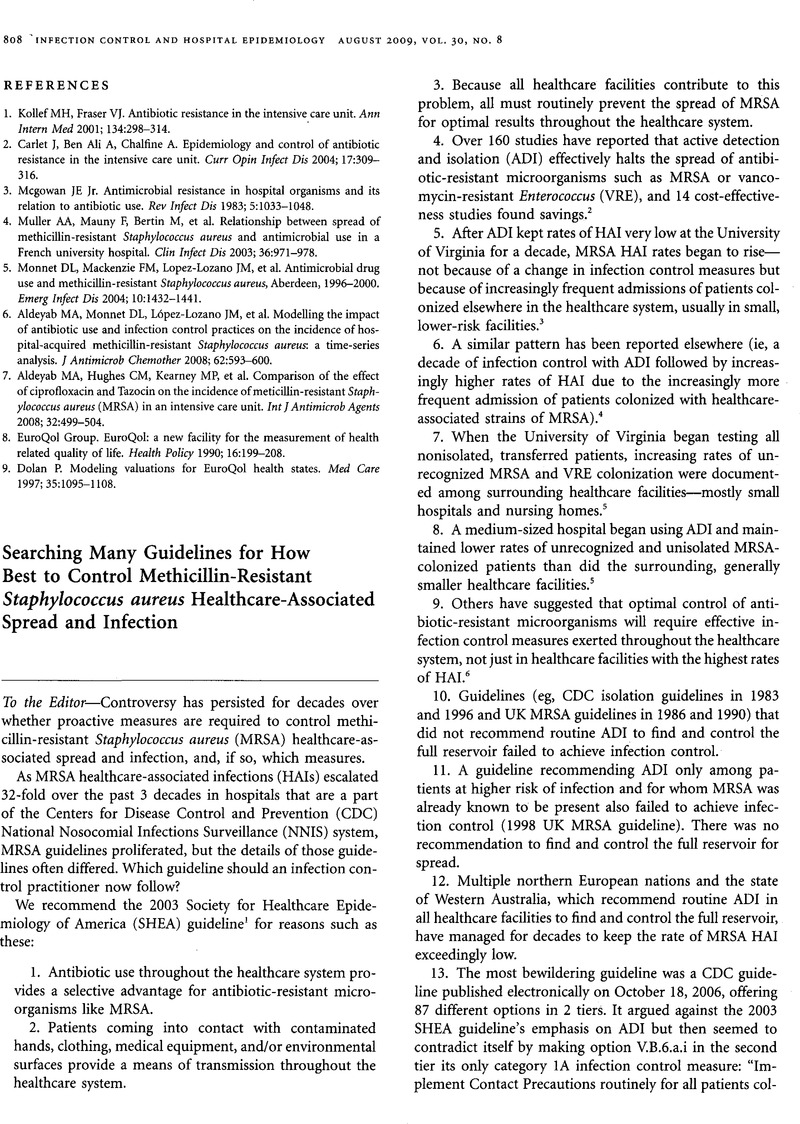Crossref Citations
This article has been cited by the following publications. This list is generated based on data provided by Crossref.
Lee, Andie S.
Huttner, Benedikt
and
Harbarth, Stephan
2011.
Control of Methicillin-resistant Staphylococcus aureus.
Infectious Disease Clinics of North America,
Vol. 25,
Issue. 1,
p.
155.
Garcia, Robin
Vonderheid, Susan
McFarlin, Barbara
Djonlich, Michelle
Jang, Catherine
and
Maghirang, Jeffrey
2011.
Cost and Health Outcomes Associated With Mandatory MRSA Screening in a Special Care Nursery.
Advances in Neonatal Care,
Vol. 11,
Issue. 3,
p.
200.
Jarvis, William R.
Jarvis, Ashley A.
and
Chinn, Raymond Y.
2012.
National prevalence of methicillin-resistant Staphylococcus aureus in inpatients at United States health care facilities, 2010.
American Journal of Infection Control,
Vol. 40,
Issue. 3,
p.
194.





